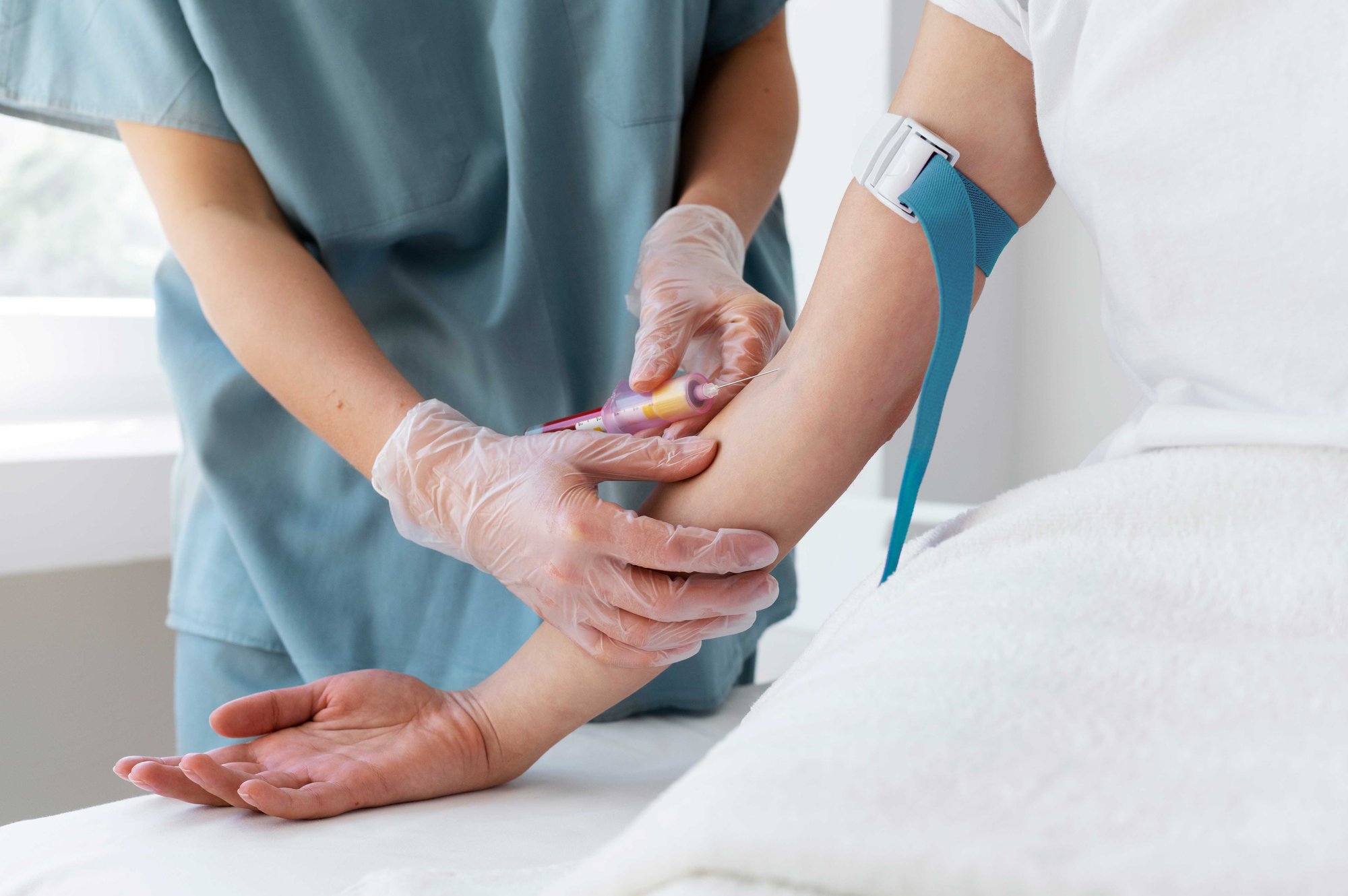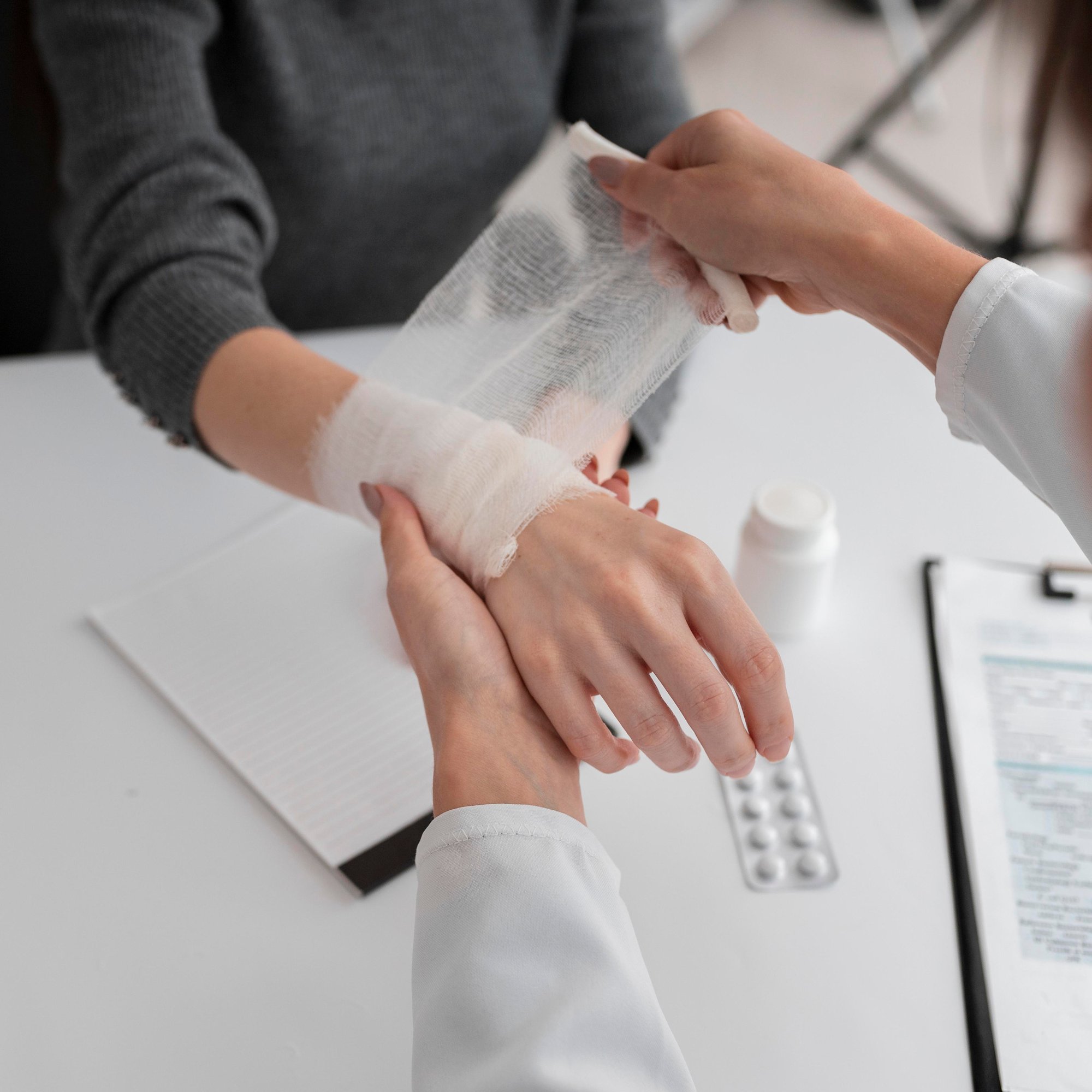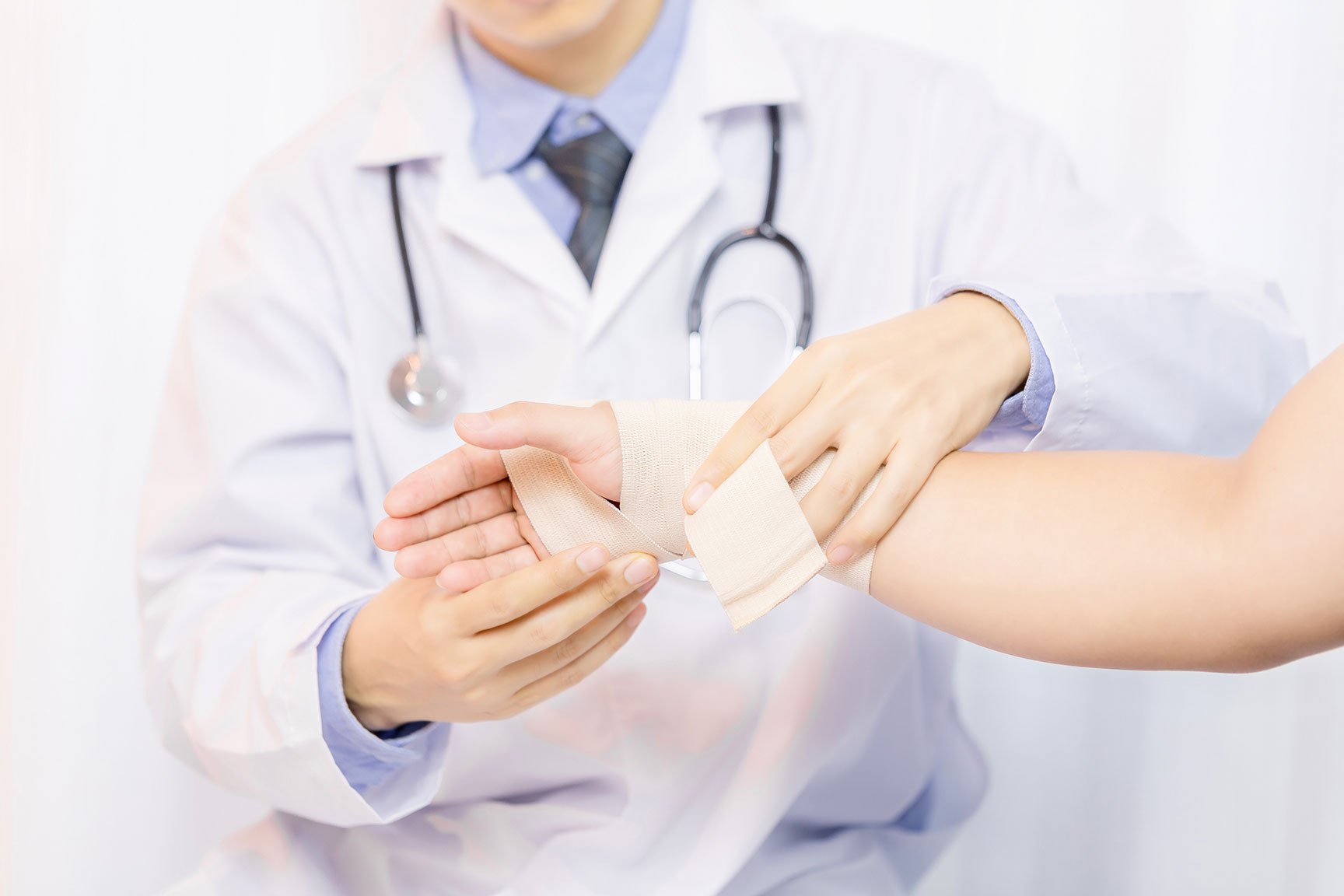Understanding What's Under the Surface
-NextGen Wound Lab Testing
Efficient Identification for Targeted Treatment
At NextGen Wound Care Clinic, we provide precise wound lab testing to identify the bacteria responsible for a wound infection. Our bacterial wound lab testing is designed to streamline the diagnostic process for medical professionals, allowing for accurate treatment decisions and improved patient outcomes.
Wound lab testing is a critical diagnostic procedure that detects and characterizes the pathogenic bacteria responsible for wound infections.
Wounds, ranging from superficial skin abrasions to deeper tissue injuries, are susceptible to infection by various bacterial strains. NextGen’s wound lab testing diagnostic process aids in confirming wound infection and identifying the causative bacterial type.

What is Being Tested?
A Gram stain is a wound lab testing technique employed to identify the presence of bacteria and occasionally fungi in a specimen obtained from a suspected infection site. It provides relatively rapid results regarding the presence of bacteria or fungi, along with a broad classification.
During this microscopic examination, any bacteria present are differentiated based on their color and shape:
- Color – Typically, bacteria are categorized as either "Gram-positive" (appearing purple) or "Gram-negative" (appearing pink).
- Shape – The most common shapes include spherical (cocci) or rod-shaped (bacilli).
Further insights can be gleaned by observing how bacteria are grouped on the slide, such as cocci found singly, in pairs, in groups of four, in clusters, or in chains, or bacilli displaying variations in thickness, length, or the presence of enlarged spores at one end. Any intracellular bacteria within white blood cells are also documented.
The Gram stain's color and bacterial morphology offer clues about the potential causative agent of the infection.

Example:
- Staphylococcus aureus, responsible for staph infections, is an example of Gram-positive cocci.
- Escherichia coli, the cause of many urinary tract infections, is a Gram-negative bacterium.
Although Gram stains serve as valuable initial tests for identifying and categorizing general types of bacteria or fungi, these results are generally regarded as preliminary. Confirming a diagnosis often requires culture and/or additional tests, such as antigen, antibody, or molecular testing targeting specific bacterial strains.
On occasion, susceptibility testing may be necessary to determine the most effective antibiotic for treating the infection. Viruses, however, cannot be visualized using the Gram staining method.
The Lab Wound Testing Process

- Sample Collection: To initiate the process, a sample of fluid, cells, or tissue is collected from the wound site.
- Nutrient-Rich Environment: The collected sample is then introduced into a nutrient-rich media designed to promote bacterial growth.
- Preliminary Gram Stain: A Gram stain is initially conducted, providing rapid insights into bacterial characteristics, which can guide initial treatment decisions. Gram positive typically appears purple and gram negative pink.
- Advanced Mass Spectrometry: For precise identification to the genus and species level, modern mass spectrometry techniques, such as MALDI-TOF, are employed. This advanced technology significantly reduces identification time compared to traditional methods that require overnight incubation.
- Antibiotic Susceptibility Testing: Bacterial susceptibility to antibiotics is further assessed to assist healthcare practitioners in selecting the most suitable antibiotics to inhibit bacterial growth effectively.
Common Questions

How is the Gram stain utilized?
A Gram stain, in conjunction with a culture derived from an infected site sample, pinpoints the source of a bacterial infection. This stain delivers initial insights into the presence of bacteria and their broad categorization, including characteristics like shape and whether they are Gram-positive or Gram-negative.
Detecting the existence of bacteria and discerning whether an infection is rooted in Gram-positive or Gram-negative microbes allows healthcare professionals to initiate suitable wound treatment.
Treatment can be started while awaiting more specific test results, such as culture outcomes. The presence or absence of white blood cells in the Gram stain can help validate the sufficiency of the sample collected since white blood cells often accompany infections.
A Gram stain may be conducted as an integral part of evaluating a culture. When bacteria proliferate within a laboratory culture, a Gram stain analysis is conducted to identify the bacterial type and to determine the need for additional tests. These supplementary tests become imperative for the proper identification of the infection's cause.
Gram stain is also capable of detecting fungi, including yeast.

How is the Gram stain requested?
A Gram stain is typically requested concurrently with a culture when there is suspicion of a bacterial or, on occasion, fungal infection. Also, it is commonly carried out when the culture yields a positive result, specifically on a sample of the bacteria cultivated during the culture process. The results of these tests are promptly reported to assist in directing the best course of treatment.

How is the Gram stain test results mean?
A negative Gram stain is often reported as “no organism seen.” This might indicate the absence of a bacterial infection or the presence of an insufficient quantity of bacteria in the sample for visualization under the microscope.
Positive Gram stain results typically include the following details:
- Whether the bacteria are Gram-positive (appearing purple) or Gram-negative (appearing pink).
- Shape, including round (cocci) or rod-shaped (bacilli) organisms.
- Size, relative quantity, and arrangement of the bacteria, if relevant.
- The presence of red blood cells or white blood cells.
- Detection of fungi, such as yeasts or molds, which may appear as single cells or complex, branching structures called hyphae. Further testing may be necessary to identify the specific type of fungi.
This information is always evaluated in conjunction with clinical signs, symptoms, and additional findings to aid in determining the most effective treatment, sometimes even before culture results become available.
Gram stain results are typically considered preliminary. Confirmatory tests, including cultures and other specialized tests such as antigen and antibody testing for specific bacteria, are often required to establish a diagnosis.

In some cases, susceptibility testing may also be necessary to determine the most appropriate antibiotic for treating the infection.
Here are a few examples of medically significant bacteria and their appearance on a Gram stain:
- Gram-positive cocci: Staphylococcus aureus (Staph aureus) can cause skin infections and toxic shock syndrome; Streptococcus pneumoniae can cause pneumonia.
- Gram-negative cocci: Neisseria meningitidis causes meningitis, while Neisseria gonorrhoeae causes the sexually transmitted disease gonorrhea.
- Gram-positive bacilli: Bacillus anthracis (anthrax) can cause skin infections or pneumonia; Listeria monocytogenes can lead to foodborne illnesses.
- Gram-negative bacilli: Escherichia coli is a common cause of urinary tract infections.
Samples such as blood and cerebrospinal fluid are typically sterile, meaning bacteria are not usually present unless there is an infection. Infections in these samples may at first involve low numbers of bacteria, requiring additional processing to concentrate the bacteria for detection via Gram stain.
In contrast, other body fluids and sites, such as sputum or skin, often contain normal flora alongside infection-causing bacteria. Gram stains of these samples necessitate careful examination by a trained laboratorian to distinguish between normal and infection-related cells.

What are other considerations about Gram stain testing?
It's crucial not to underestimate bacterial infections, even if the symptoms appear mild. Timely treatment can effectively contain the progression of bacteria and reduce their severity. Untreated bacterial infections have the potential to spread and, over time, may lead to damage in tissues and organs.
- It's important to note that Gram stains are not effective for detecting viral infections. Different diagnostic methods are required for identifying viruses.
- In cases where a healthcare practitioner suspects a mycobacterial infection, such as tuberculosis, they may order an AFB (acid-fast bacillus) smear and culture on a sputum sample as an alternative to a Gram stain and culture. This specialized approach is designed to detect mycobacterial infections effectively.

What are the bacterial treatment choices?
Antibiotics serve as the primary treatment approach for the majority of bacterial infections. However, in the case of an abscess, additional steps may be required. Incision and drainage of the abscess are often necessary to effectively eliminate the infection. This procedure is essential because antibiotics may not reach effective concentrations within the wound until the pus is drained away.

Why isn't a Gram stain included in every culture sample?
Gram stains are omitted when they cannot effectively distinguish disease-causing bacteria (pathogens) from the normal bacterial flora. For example, when examining a throat sample, a Gram stain cannot identify the specific bacteria responsible for an infection because both the "beneficial bacteria" and the "harmful bacteria" appear identical under the microscope.

When is additional information required by your healthcare provider?
Typically, when a healthcare provider requires more comprehensive data than what the Gram stain offers, it is performed alongside a culture, often followed by susceptibility testing. This combination enables precise identification of the bacteria responsible for the infection and the selection of the most suitable antibiotic treatment.
If further diagnostic clarity is needed, various other tests are accessible, such as antigen and antibody testing, as well as molecular tests capable of detecting the genetic material of the bacteria.
Rapid Detection of Wound Pathogens
Advanced wound pathogen assay employs NAAT and RT-PCR technology for swift and accurate diagnosis.
Learn MoreWound Requisition Form
Submit a wound requisition form for rapid pathogen diagnosis and treatment.
Learn More
